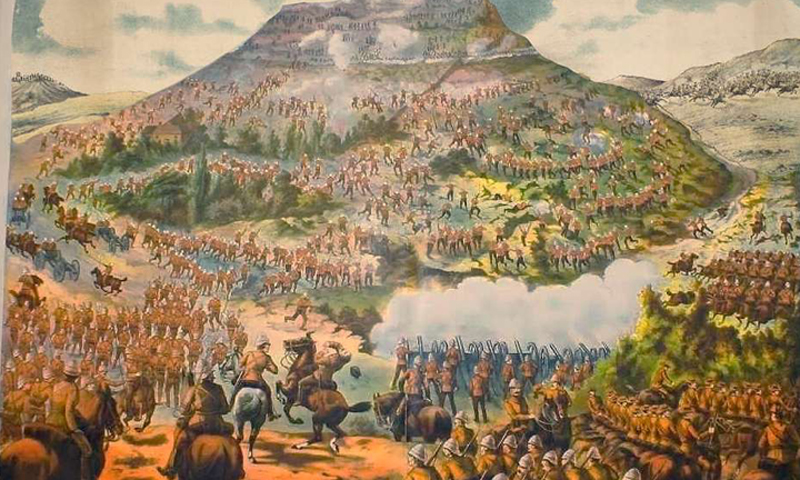
The Boer Wars
From the 1600s, Dutch, French and German settlers arrived in South Africa and it was this community that was known as the Boers (Dutch: ‘farmers’). When neighbouring British settlers proposed a unification, with their newly-established policy of freeing all slaves in the British Empire, the Boers were appalled and set off on their ‘Great Trek’ (1836-52) northwards to claim adjacent territory. The British and the Boers rubbed along for a while but when gold was discovered on their border, tensions rose until the Boers initiated military action.
British soldiers in the first Boer War (1880-81) wore their traditional redcoats but by the end of the 2nd Boer War (1899-1902) they had swapped to khaki, since they had been easy targets for the Boers’ guerrilla tactics using the latest German rifles (bought with the gold).
Colonel Robert Baden-Powell (1857-1941) was one of the British leaders who kept their men’s morale up under siege from the Boers at Kimberley, Ladysmith and Mafeking. Eventually, reinforcements from the British Empire overwhelmed the Boers after what had been Britain’s most expensive war and a terrible forerunner for WW1 trench warfare. Sadly, after gaining self-government in 1910 and full sovereignty in 1934, the Boers/Afrikaners reverted to previous prejudices and gradually implemented ‘apartheid’.
(Image: Bacon’s S.Africa Prints at picryl.com / Public domain)
